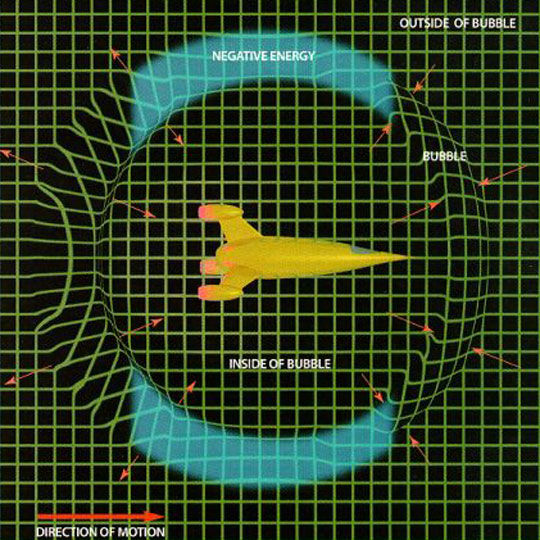
Star Wars vs Star Trek vs Battle Tech Space Battles
#881
Posted 07 March 2012 - 06:45 PM
In ME2. You could travel between star systems anyways, but as I'm sure you recall, you ran out of fuel quickly.
#882
Posted 07 March 2012 - 09:25 PM
 Zakatak, on 07 March 2012 - 06:39 PM, said:
Zakatak, on 07 March 2012 - 06:39 PM, said:
Is this a reality in which the dark ages never happened or something?
no the Honorverse setup a new dating system based on a MAJOR event The Dispora when people headed to the stars in vast numbers the here is a pretty good timeline even if its somewhat confusing
http://honorverse.wi...m/wiki/Timeline
its ~2000 years after mankind headed to the stars 1 Ante Diaspora = 2102 so in all actuality 2000 in the honorverse time line would be ~4102
#883
Posted 08 March 2012 - 03:23 PM
Well, it should have been my thing. I figured with a name like "Honorverse" and with ship names beginning with "HMS"... yeah. Seems kind of cool though. Might give it a look.
I've noticed that every sci-fi either has accelerations between 2-10g's (for the "low tech" ones), or between 1000-100000g's (for the "high tech" ones). I think someone even said the Voyager can do 5000km/s^2. Catamount, what would you put the accelerations on these fighters at? It would look like the Normandy can outrun them on afterburners.
#884
Posted 09 March 2012 - 02:22 AM
#885
Posted 09 March 2012 - 07:18 AM
 Zakatak, on 08 March 2012 - 03:23 PM, said:
Zakatak, on 08 March 2012 - 03:23 PM, said:
Well, it should have been my thing. I figured with a name like "Honorverse" and with ship names beginning with "HMS"... yeah. Seems kind of cool though. Might give it a look.
I've noticed that every sci-fi either has accelerations between 2-10g's (for the "low tech" ones), or between 1000-100000g's (for the "high tech" ones). I think someone even said the Voyager can do 5000km/s^2. Catamount, what would you put the accelerations on these fighters at? It would look like the Normandy can outrun them on afterburners.
I was just wondering that last night, when I went through the scene, in-game.
The Normandy you can't guess since there's no reliable frame of reference
The fighters, however, seem to be able to accelerate to at least a solid couple hundred meters per second, if not more, in just about a second. If we assume, say, 200m/s^2, then that's 200m/s^2/((9.8m/s^2)/G) is about 20Gs. 500m/s^2 is about 51Gs. I can't see them going much faster than that. It just shows that small craft at sublight are very limited, not surprising, given how much longer it took Normandy's shuttle to reach the station than the Normandy itself.
It's sort of backwards of Star Wars and NBSG, where all the capital ships are the slow ships. Once you start getting tech to reduce mass, however, like ME and Trek, suddenly it's the bigger ships that start being able to go faster
I wonder if that ties into her combat systems at all, having an oversized mass effect core... Could she be the Alliance's equivalent to the Trek Defiant Class?
Edited by Catamount, 09 March 2012 - 07:26 AM.
#886
Posted 09 March 2012 - 02:46 PM
#887
Posted 09 March 2012 - 03:52 PM
 Catamount, on 09 March 2012 - 07:18 AM, said:
Catamount, on 09 March 2012 - 07:18 AM, said:
I was just wondering that last night, when I went through the scene, in-game.
The Normandy you can't guess since there's no reliable frame of reference
The fighters, however, seem to be able to accelerate to at least a solid couple hundred meters per second, if not more, in just about a second. If we assume, say, 200m/s^2, then that's 200m/s^2/((9.8m/s^2)/G) is about 20Gs. 500m/s^2 is about 51Gs. I can't see them going much faster than that. It just shows that small craft at sublight are very limited, not surprising, given how much longer it took Normandy's shuttle to reach the station than the Normandy itself.
It's sort of backwards of Star Wars and NBSG, where all the capital ships are the slow ships. Once you start getting tech to reduce mass, however, like ME and Trek, suddenly it's the bigger ships that start being able to go faster
I wonder if that ties into her combat systems at all, having an oversized mass effect core... Could she be the Alliance's equivalent to the Trek Defiant Class?
Since when does Trek have mass reduction?
(I know that they have inertial dampers, but I don't recall ever hearing of them being used for anything other than preventing crew-pulping...)
Andromeda has mass-reduction (reducing the effective inertial mass of a ~96 kiloton Glorious Heritage cruiser to around 1 kg) and MPD thrusters, and said cruiser can manage accelerations of 500,000 m/(s^2) and sublight speeds of 0.40c.
Mass Effect also has mass-reduction and uses a combination of ion drives, "fusion torches", and M/AM rockets for sublight propulsion.
(Are there any numbers for ME ships other than dreadnoughts?
As such, I would estimate Mass Effect's sublight performance to generally be close to that of Andromeda...
Your thoughts?
Edited by Strum Wealh, 09 March 2012 - 03:55 PM.
#888
Posted 09 March 2012 - 04:18 PM
Impulse engines are described in the TMs as using low-strength warp fields to reduce the mass of ships for thrust. That's how Trek ships hit significant fractions of c very quickly at impulse. The Enterprise didn't accelerate to speeds that made the Earth disappear off the view screen at sublight in like five seconds just on pure thrust
I can't comment on Andromeda, since I've barely seen it, and Mass Effect, well they seem to be able to jet across star systems in a matter of hours at most while not at FTL (if you remember the very first scene in ME1), and the reapers seem to be able to do it in minutes... if that.
Edited by Catamount, 09 March 2012 - 04:21 PM.
#889
Posted 09 March 2012 - 05:57 PM
 Catamount, on 09 March 2012 - 04:18 PM, said:
Catamount, on 09 March 2012 - 04:18 PM, said:
I think the point is that ME ships of frigate size and larger do have on-board FTL drives which they use for normal travel, generally only dropping to sublight speeds to resupply and engage enemy vessels. The ME FTL drives are limited in range by fuel. http://masseffect.wikia.com/wiki/FTL
The Mass Relays are necessary because they transcend even "normal" FTL drives. Their power sources are unknown so far as I know, and they warp space to such a degree that they can transport an object instantaneously (bypassing the effects of relativity).
http://masseffect.wi...wiki/Mass_relay
Ships like shuttles and fighters are too small to carry an on-board FTL drive and are limited to sublight speeds.
The Reapers, being the creators of the Mass Effect Relays, would probably have significantly more advanced FTL drives for general travel. They are still dependent on their Mass Relays for long-range journeys, especially the Citadel which seems to link to another Relay beyond the galactic rim which serves as the gateway to the Reaper's hibernation zone.
#890
Posted 09 March 2012 - 06:01 PM
Anyway, for my sci-fi...
Northrop-Grumman FAC-class
Crew = 10
Mass = 500 tons
Accel. = 240m/s^2 (military thrust) or 1.25x on emergency thrust (30s max)
Reactor = 90GW (recommended), 120GW (max)
Capacitor = 96TJ
Armor = 7cm, Graphenium (10000x stronger and 10x lighter than steel, prohibitedly expensive)
Radar = 5 micrometre resolution, 140 degree coverage
Weapons =
- 4x UV-Lasers (60GJ per burst)
- 1x Experimental coilcannon (2TJ, 72RPM)
- 26x AP missiles (5100km range, 1.5 grams AP each)
Atmospheric? = Yes, STOL landing
Production = Sept. 17th, 2199
Boeing Starworks HBC-class
Crew = 240
Mass = 72000 tons
Accel. = 32m/s^2 (military thrust) 1.25x on emergency thrust (60s max)
Reactor = 1800GW (recommended), 2000GW (max)
Capacitor = 4PJ
Armor = 30cm Titanium-Fibre Nanotubing (2000x stronger and 4x lighter than steel)
Radar = 3 micrometre resolution, 360 degree coverage
Weapons =
- 20x UV-Lasers (20GJ per burst)
- 1x Forward-mounted coilcannon (30TJ, 24RPM)
- 9x Point-defense coilcannon (200GJ, 48RPM)
- 120x AP missiles (0.5 grams AP, 3000km range)
- 4x AP torpedoes (5 grams AP, 20000km range)
- 1x AP bomb (2kg AP, orbital release, requires launch keys and acceptance of the United Nations)
Complement:
- 4x Shuttles (VTOL capable, 40 person capacity)
- 8x Eagle II Scramjets (Mach 19, 2 person crew)
Atmospheric?: Upper-mesosphere or higher
Production: August 3rd, 2184
Lockheed-Martin PF-class
Crew = 12
Mass = 875 tons
Accel. = 192m/s^2 (military thrust), 1.25x on emergency thrust (20s)
Reactor = 50GW (recommended), 80GW (max)
Capacitor = 56TJ
Armor = 10cm Titanium-Fibre Nanotubing (2000x stronger and 4x lighter then steel)
Radar = 20 micrometre resolution, 120 degree coverage
Weapons =
- 5x UV-Lasers (15GJ per burst)
- 2x coilcannons (400GJ, 60RPM)
- 40x AP missiles (2000km range, 1 gram)
Atmospheric?: Yes, CTOL landing
Production: December 20th, 2169
Mikoyan Black Eagle-class
Crew = 72
Mass = 24000 tons
Accel. = 74m/s^2 (military) or 1.5x (emergency, 10s)
Reactor = 650GW (max)
Capacitor = 1PJ
Armor = 14cm Paladium + Carbon nanotube alloy (3000x stronger and 6x lighter then steel)
Radar = 8 micrometre resolution, 270 degree sweep
Weapons =
1x Particle accelerator (20TJ, 2500km range, 30RPM)
6x AP torpedoes (8000km range, 4 grams AP)
10x Point-defense railguns (150MJ, 750RPM)
Atmospheric?: Mid-mesosphere or higher
Production: January 6th, 2178
Gravity is provided by diamagnetism, crew has to take pills to avoid sickness from the magnetic fields. Some are horizontally mounted to somewhat counteract G-force during accel/decel. Sensors detect metallic objects and reduce field strength to stop forks and knives from getting stuck on the floor. No FTL engines or sensors whatsoever, although there is FTL communications on some ships.
Edited by Zakatak, 09 March 2012 - 07:00 PM.
#891
Posted 09 March 2012 - 10:57 PM
Edited by Captain Wolfus Maximus, 09 March 2012 - 11:00 PM.
#892
Posted 10 March 2012 - 03:13 AM
 Captain Wolfus Maximus, on 09 March 2012 - 10:57 PM, said:
Captain Wolfus Maximus, on 09 March 2012 - 10:57 PM, said:
Read the thread, you have not!
Keep up the debate guys, this is most entertaining to read.
Edited by pursang, 10 March 2012 - 03:14 AM.
#893
Posted 10 March 2012 - 04:14 AM
So far in sci-fi, all methods of FTL based upon distortion of time-space: Star Trek Warp, SG wormholes, Star Wars HyperSpace, BSG HyperJump. Actually, so far as we know, all above is possible with current physics
I know only two kinds of FTL drives which simply get ship over light speed without Hyper-Magic-Space cheat route - MassEffect Core im ME and stuter-drive from Sword of the Stars RTS game.
#894
Posted 10 March 2012 - 05:57 AM
Edited by guardiandashi, 10 March 2012 - 05:58 AM.
#895
Posted 10 March 2012 - 06:45 AM
#896
Posted 10 March 2012 - 07:00 AM
 Longsword, on 10 March 2012 - 06:45 AM, said:
Longsword, on 10 March 2012 - 06:45 AM, said:
This has been an on and off discussion on this thread for some time now. It might not be directly relevant to the thread, but not a whole lot is left that is relevant. We've pretty much talked this topic into the dirt. It's not as if any of the regulars here are suddenly going to change our opinions on who wins in a fight or why. Zakatak's world is still sci-fi related, and I would rather something was being discussed on this thread than see it die (with 45 pages and counting we're already catching up with the Ponies).
Directed at Zakatak's post: my only question is the use of diamagnetism to produce artificial gravity. I'm not very familiar with this mechanism, but it was my understanding that it takes incredible amounts of power to produce as a strong enough field to be effective. Would it be worth it? Would it be more cost and resource efficient to create something like the turning pod sections a la human ships in Babylon 5?
#897
Posted 10 March 2012 - 07:13 AM
Also, the thread is about who would win in a fight- Zakataks info on his own sci-fi doesn't say anything about "who would win in a fight" its just him plugging his imaginary sci-fi for some reason. If he wants to share his work, sure, but it should be in a seperate thread.
#898
Posted 10 March 2012 - 07:31 AM
 Stripes, on 10 March 2012 - 04:14 AM, said:
Stripes, on 10 March 2012 - 04:14 AM, said:
So far in sci-fi, all methods of FTL based upon distortion of time-space: Star Trek Warp, SG wormholes, Star Wars HyperSpace, BSG HyperJump. Actually, so far as we know, all above is possible with current physics
I know only two kinds of FTL drives which simply get ship over light speed without Hyper-Magic-Space cheat route - MassEffect Core im ME and stuter-drive from Sword of the Stars RTS game.
Having ships with negative mass is really just about as magical as distorting space, no more or less (although at least general relativity says the distortion can happen, and does). Negative mass and Alcubierre drives both require the same thing to work: fudging with a hypothetical particle that makes all the inconvenient physics go away. Mass Effect ships essentially would require an anti-Higgs Boson for that negative mass (or if mass isn't created by a particle, well... I have no idea then), and the Alcubierre drive, which is the closest thing to warp/hyperspace/etc, requires matter which features negative energy density. So really, they suffer a remarkably similar fundamental flaw, despite being superficially different.
I'm not saying FTL travel isn't possible, of course. Knowing us, we'd propel the damn thing on the sheer power of human obstinance if we had to
Edited by Catamount, 10 March 2012 - 07:42 AM.
#899
Posted 10 March 2012 - 07:33 AM
 Stripes, on 10 March 2012 - 04:14 AM, said:
Stripes, on 10 March 2012 - 04:14 AM, said:
So far in sci-fi, all methods of FTL based upon distortion of time-space: Star Trek Warp, SG wormholes, Star Wars HyperSpace, BSG HyperJump. Actually, so far as we know, all above is possible with current physics
I know only two kinds of FTL drives which simply get ship over light speed without Hyper-Magic-Space cheat route - MassEffect Core im ME and stuter-drive from Sword of the Stars RTS game.
I think two very distinct things are being conflated: use of space-time distortion and use of higher orders of reality (e.g. hyperspace).
The Alcubierre Drive (the underlying concept upon which Trek's warp drives, among others, are based) does the former (distorts space) without doing the latter (entering a higher order of reality, such as "hyperspace") - that's the point.

Also:
Quote
The "speed" of a Liirian vessel is determined by the number of teleports per second that its engine can perform. It is not difficult for the Liir to achieve relativistic speeds in open space, but the stutter drive has a distinct disadvantage when operating near a gravity well. Any object massive enough to cause a large space-time distortion—be it a planet, star or black hole—can severely slow the movement of a Liirian ship.
Moreover:
Quote
-----
Mass effect fields are created through the use of element zero. Element zero can increase or decrease the mass content of space-time when subjected to an electrical current via dark energy. With a positive current, mass is increased. With a negative current, mass is decreased. The stronger the current, the greater the magnitude of the dark energy mass effect.
In space, low-mass fields allow FTL travel and inexpensive surface-to-orbit transit. High-mass fields create artificial gravity and push space debris away from starships. In manufacturing, low-mass fields permit the creation of evenly-blended alloys, while high mass compaction creates dense, sturdy construction materials.
-----
Mass relays function by creating a virtually mass-free "corridor" of space-time between each other. This can propel a starship across enormous distances that would take centuries to traverse, even at FTL speeds. Before a vessel can travel, the relay must be given the amount of mass to transit by the ship's pilot before it is moved into the approach corridor. When a relay is activated, it aligns itself with the corresponding relay before propelling the ship across space.
It sounds like both the ME drives and the Stutter Drives are more examples example of drive systems that allow FTL travel by manipulating/distorting space-time without "entering/exiting hyperspace" (though, with the latter, even that would depend on the exact workings of the drive and "where" the Liir ship is during the "teleportations"), rather than "by brute speed" (would be the case with, say, Conjoiner Drives used on lighthuggers (which, it should be noted, are normally "only" near-luminal and actually superluminal only when coupled with an inertial suppressor)).
Your thoughts?
Edited by Strum Wealh, 10 March 2012 - 07:53 AM.
#900
Posted 10 March 2012 - 07:36 AM
@Strum Wealh
Having a bit of trouble getting the forums to format your post?
Edited by Catamount, 10 March 2012 - 07:37 AM.
1 user(s) are reading this topic
0 members, 1 guests, 0 anonymous users













